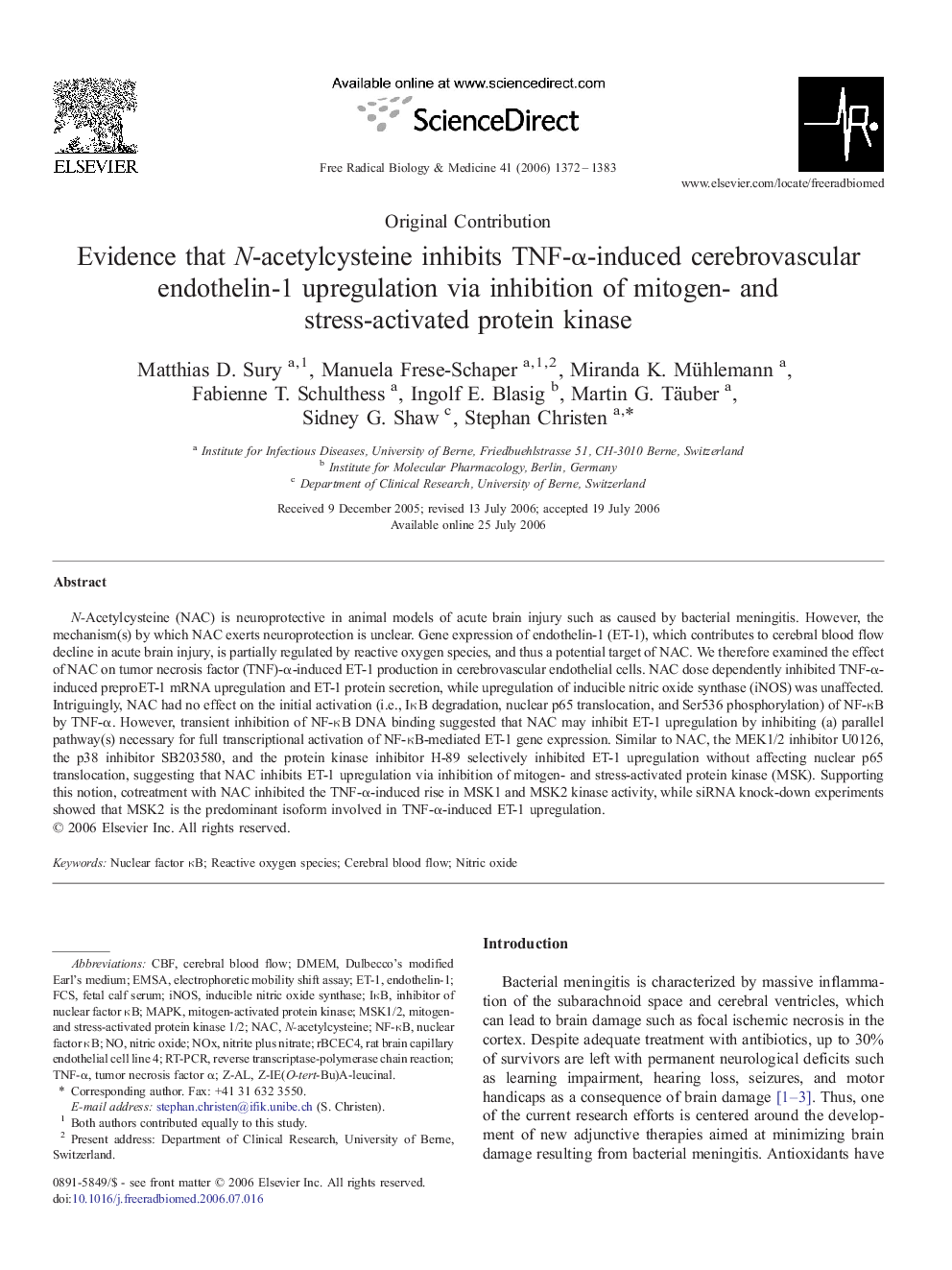| Article ID | Journal | Published Year | Pages | File Type |
|---|---|---|---|---|
| 1911135 | Free Radical Biology and Medicine | 2006 | 12 Pages |
N-Acetylcysteine (NAC) is neuroprotective in animal models of acute brain injury such as caused by bacterial meningitis. However, the mechanism(s) by which NAC exerts neuroprotection is unclear. Gene expression of endothelin-1 (ET-1), which contributes to cerebral blood flow decline in acute brain injury, is partially regulated by reactive oxygen species, and thus a potential target of NAC. We therefore examined the effect of NAC on tumor necrosis factor (TNF)-α-induced ET-1 production in cerebrovascular endothelial cells. NAC dose dependently inhibited TNF-α-induced preproET-1 mRNA upregulation and ET-1 protein secretion, while upregulation of inducible nitric oxide synthase (iNOS) was unaffected. Intriguingly, NAC had no effect on the initial activation (i.e., IκB degradation, nuclear p65 translocation, and Ser536 phosphorylation) of NF-κB by TNF-α. However, transient inhibition of NF-κB DNA binding suggested that NAC may inhibit ET-1 upregulation by inhibiting (a) parallel pathway(s) necessary for full transcriptional activation of NF-κB-mediated ET-1 gene expression. Similar to NAC, the MEK1/2 inhibitor U0126, the p38 inhibitor SB203580, and the protein kinase inhibitor H-89 selectively inhibited ET-1 upregulation without affecting nuclear p65 translocation, suggesting that NAC inhibits ET-1 upregulation via inhibition of mitogen- and stress-activated protein kinase (MSK). Supporting this notion, cotreatment with NAC inhibited the TNF-α-induced rise in MSK1 and MSK2 kinase activity, while siRNA knock-down experiments showed that MSK2 is the predominant isoform involved in TNF-α-induced ET-1 upregulation.
